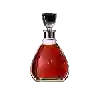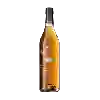
Winery Terres des TempliersGaïa Banyuls Traditionnel
This wine generally goes well with poultry, beef or rich fish (salmon, tuna etc).
Food and wine pairings with Gaïa Banyuls Traditionnel
Pairings that work perfectly with Gaïa Banyuls Traditionnel
Original food and wine pairings with Gaïa Banyuls Traditionnel
The Gaïa Banyuls Traditionnel of Winery Terres des Templiers matches generally quite well with dishes of beef, rich fish (salmon, tuna etc) or shellfish such as recipes of hungarian goulash, bacalhau com natas or shrimp and cherry tomato quiche.
Details and technical informations about Winery Terres des Templiers's Gaïa Banyuls Traditionnel.
Discover the grape variety: Monerac
Monerac noir is a grape variety that originated in France (Languedoc). It produces a variety of grape specially used for wine making. It is rare to find this grape to eat on our tables. Monerac noir can be found in several vineyards: South-West, Cognac, Bordeaux, Provence & Corsica, Rhone valley, Languedoc & Roussillon, Loire valley, Savoie & Bugey, Beaujolais.
Last vintages of this wine
The best vintages of Gaïa Banyuls Traditionnel from Winery Terres des Templiers are 2016
Informations about the Winery Terres des Templiers
The Winery Terres des Templiers is one of of the world's great estates. It offers 98 wines for sale in the of Banyuls to come and discover on site or to buy online.
The wine region of Banyuls
Banyuls wines come from the South-eastern Part of Roussillon, in the south of France, in the lower Pyrenees, a few kilometres from the Spanish border. These naturally Sweet wines are consumed both as an aperitif and as a dessert. They come in a wide range of hues, from GoldenGreen (Banyuls Blanc) to Amber (Banyuls Ambré) to the intense garnet of the standard Banyuls Rouge. Unusually among the natural sweet wines of France, all Banyuls wines are made primarily from Grenache grapes of various colors.
The wine region of Languedoc-Roussillon
Languedoc (formerly Coteaux du Languedoc) is a key appellation used in the Languedoc-Roussillon wine region of southern France. It covers Dry table wines of all three colors (red, white and rosé) from the entire region, but leaves Sweet and Sparkling wines to other more specialized appellations. About 75% of all Languedoc wines are red, with the remaining 25% split roughly down the middle between whites and rosés. The appellation covers most of the Languedoc region and almost a third of all the vineyards in France.
The word of the wine: Côte des Blancs
One of the most famous terroirs of the Champagne region, from Épernay to Vertus, mainly devoted to Chardonnay, hence its name. The villages of Chouilly, Cramant, Cuis, Mesnil-sur-Oger, Avize, etc., lying on the chalk, are in a way to Champagne what Meursault, Chablis and Puligny are to Burgundy.













